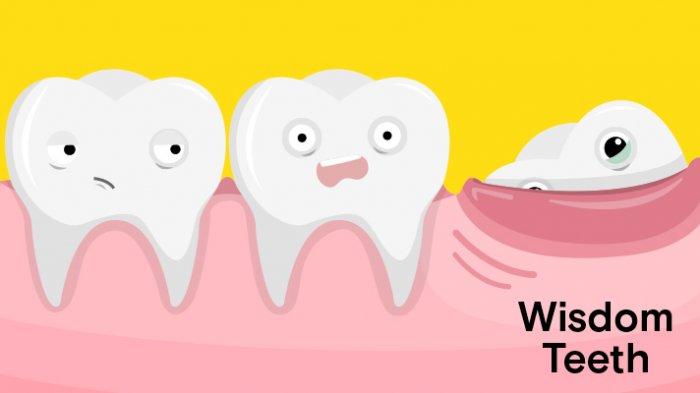Managing the worst day of pain after wisdom tooth extraction is a great challenge. Undergoing dental procedures like wisdom teeth removal can feel intimidating, particularly with concerns about pain post-surgery. However, understanding the process and preparing well can help reduce anxiety and ensure a smoother recovery.

How to Cure Post-Extraction Pain:
Managing the worst day of pain after wisdom tooth extraction needs different treatment options. Pain tends to peak one to two days after wisdom tooth surgery. While this is normal, managing it effectively is essential. Take pain relief drugs according to the dentist’s instructions. Take the medication as directed, without waiting for the pain to intensify.
Using ice packs can also help. Apply them to your jaw for 15 minutes on and 15 minutes off to reduce pain and swelling. Pack an ice pack in a piece of cloth and protect your skin. These strategies can make the peak pain days more manageable.
Handling Swelling and Discomfort:
Swelling is a natural response most noticeable in the first few days. Even during sleep, ice packs and keeping your head elevated can help minimize swelling.
For discomfort, stick to soft foods and plenty of fluids. Avoid spicy, hot, or hard-to-chew foods. Gentle rinsing with warm salt water, starting the day after surgery, can help soothe the affected area. Ensure the rinsing is gentle to avoid disrupting the healing process.
Bleeding and Preventing Infection:
Some bleeding is normal after extraction but should decrease within 24 hours. Bite gently on gauze pads to control it, changing them as needed. Take proper care while handling the spot so that the clot may not be disturbed.
Preventing infection is vital. While brushing the extraction site should be avoided for a day or two, maintaining oral hygiene is critical. Use an antibacterial mouthwash or a warm saltwater rinse as recommended by your dentist.
What to eat after tooth extraction:
Post-surgery, opt for soft foods like yogurt, soup, applesauce, and smoothies (without using a straw). These foods provide nourishment without stressing the extraction site. Drink plenty of water and don’t use straws.
Hard, crunchy, sticky, or spicy foods can irritate the area, so it’s best to avoid them until your dentist advises otherwise. Eating the right foods can promote faster recovery.
Maintaining Oral Hygiene:
Oral hygiene is crucial for recovery but requires a gentle approach. Avoid brushing near the extraction site for the first 24-48 hours. Instead, rinse your mouth gently with warm salt water a few times daily.
As healing progresses, use a soft-bristled toothbrush and brush cautiously around the area. Your dentist may recommend an antibacterial mouthwash to prevent bacteria buildup without vigorous rinsing.
Getting Quality Sleep After Surgery:
Sleeping comfortably after wisdom tooth extraction can be difficult but is essential for recovery. Elevating your head with extra pillows helps reduce swelling and pain.
If approved by your dentist, take pain medication before bedtime to ensure uninterrupted sleep. A cold pack by your bedside can provide quick relief if needed. Create a calm sleep environment with dim lighting and minimal noise to encourage restful sleep.
Staying Hydrated Safely:
Staying hydrated supports healing but requires care to avoid disrupting the blood clot. Sip water gently from a cup rather than using a straw. You can also eat hydrating foods like watermelon or drink broth-based soups.
Proper hydration not only aids recovery but also helps flush bacteria from the mouth, reducing the risk of infection.
How Long does a Tooth Extraction Take to Heal?
Initial Healing (First 1-2 Weeks):
- First 24 Hours: A blood clot forms in the extraction site, which is crucial for healing. Mild bleeding, swelling, and discomfort are common.
- Day 2-3: Swelling may peak, but pain should begin to subside. Soft foods and proper oral hygiene help prevent complications.
- Day 7-10: The gum tissue starts to close over the extraction site. Stitches (if used) may dissolve or be removed by your dentist.
2. Bone Healing (4-6 Weeks):
- The underlying bone tissue begins to heal, but it may take several weeks for the jawbone to regenerate fully.
- During this period, avoid smoking, drinking through a straw, or consuming hard foods.
3. Complete Healing (3-6 Months):
- The bone and surrounding structures completely remodel and strengthen taking several months.
- For complex extractions, such as impacted wisdom teeth, full recovery may take closer to 6 months.
Importance of Follow-Up Visits:
Scheduling follow-up appointments with your dentist ensures your healing is on track. These visits allow your dentist to detect potential issues early and adjust your recovery plan if needed.
They are also a chance to address concerns, clarify post-surgery care, or confirm when it’s safe to resume normal activities. Skipping follow-ups can lead to unnoticed complications, delaying recovery.
Managing the Worst Day of Pain after Wisdom Tooth Extraction: Exploring Pain Relief Options:
Pain management after extraction varies for everyone. Although over-the-counter medications work for many, some may need prescription pain relief. Discuss your pain level with your dentist to get a tailored pain management plan. Effective pain control supports comfort and healing.
By following these strategies and working with your dental team, you can make your wisdom tooth extraction recovery smooth and stress-free.
Read more: Before News



